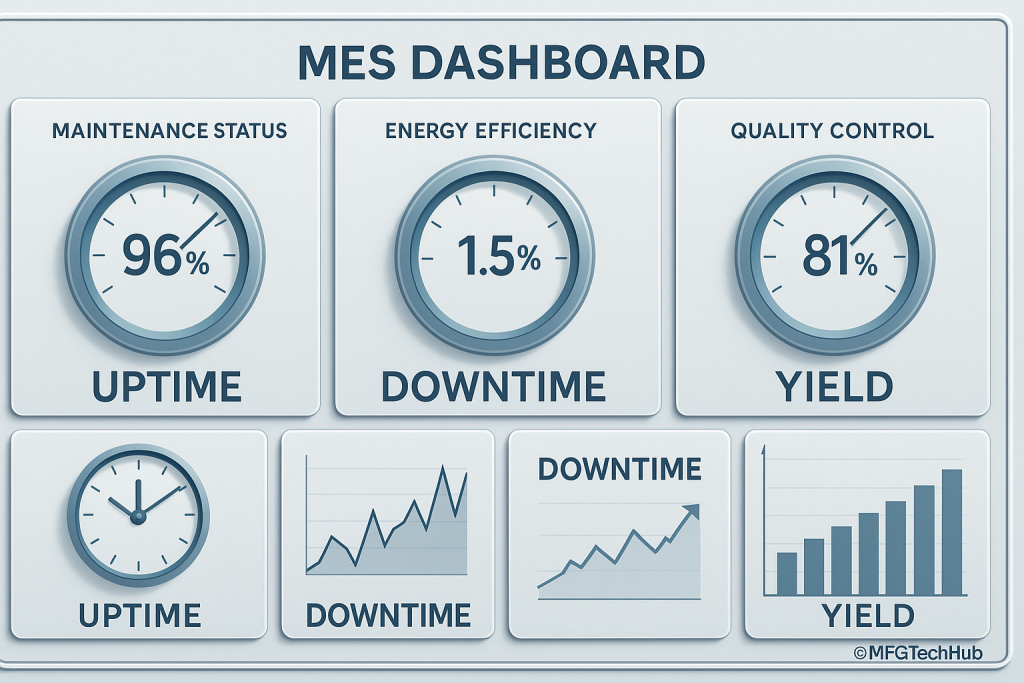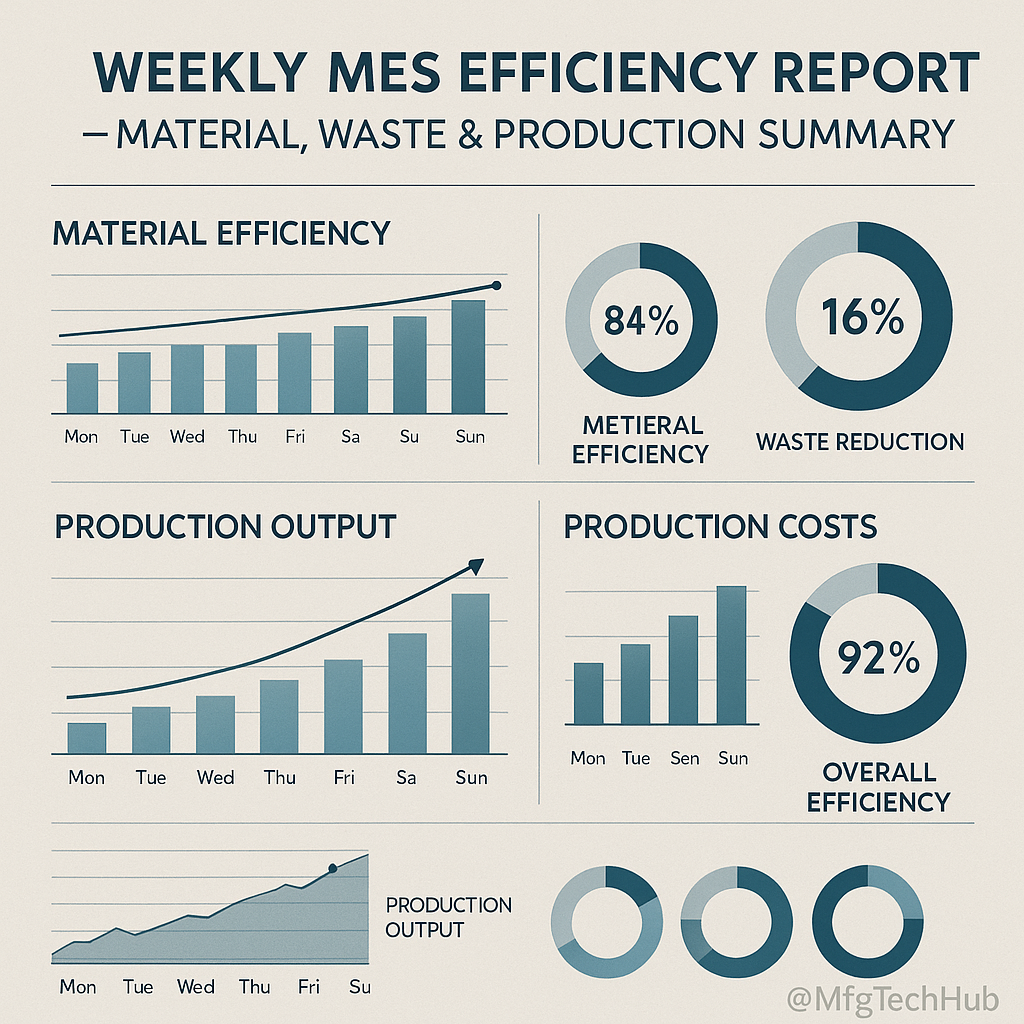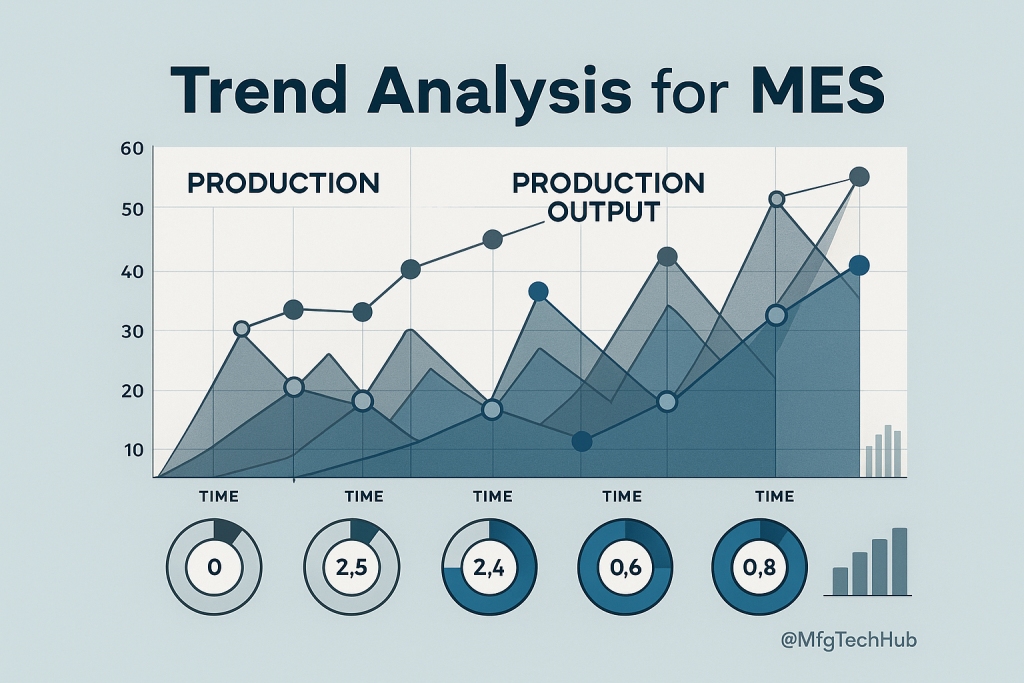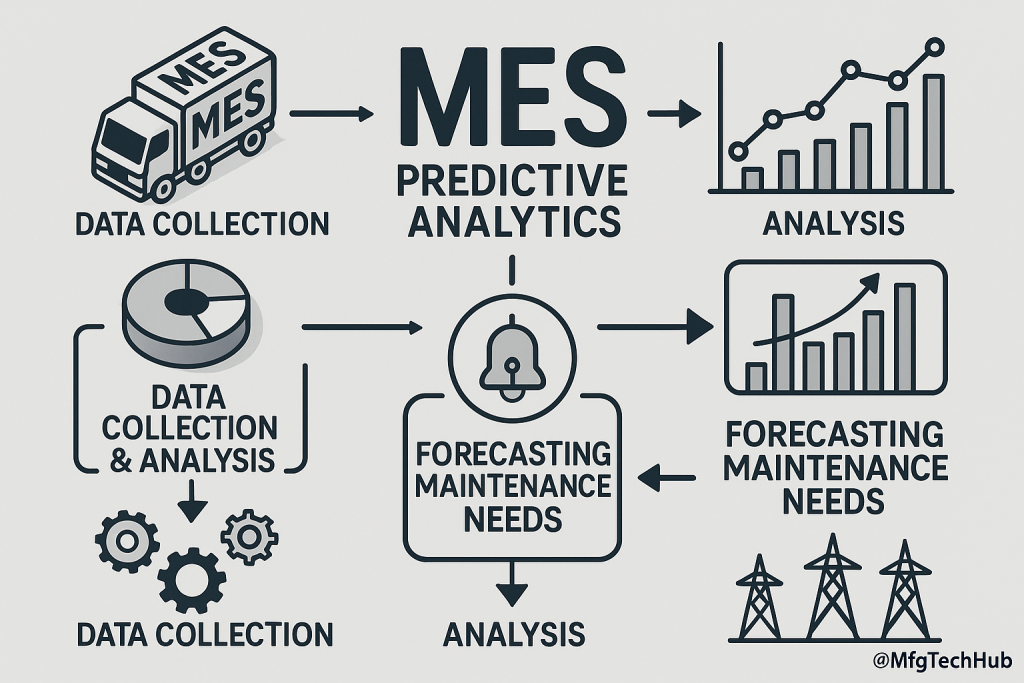MES Components: Reporting and Analytics
In today’s data-driven manufacturing environment, Reporting and Analytics is a critical component of Manufacturing Execution Systems (MES). It empowers manufacturers to make informed decisions by providing real-time insights into production performance, efficiency, and quality. By leveraging Reporting and Analytics in MES, businesses can identify bottlenecks, optimize processes, and achieve continuous improvement. Without a strong reporting backbone, even the most advanced MES lacks the transparency needed for long-term success.
What is Reporting and Analytics in MES?
Reporting and Analytics in MES involves the collection, processing, and visualization of production data to support decision-making at every level of the organization. Modern factories generate massive volumes of data every second—from machine performance to material usage, labor efficiency, and quality checks. Turning this raw information into actionable insights is what makes MES invaluable.
This capability covers several layers of functionality:
- Real-Time Reporting: Provides live updates on key performance indicators (KPIs) like throughput, downtime, and yield, enabling quick reaction to issues as they arise.
- Historical Analytics: Looks at past production data to identify recurring trends and performance patterns, helping managers make strategic decisions.
- Predictive Analytics: Uses machine learning and AI to forecast potential issues, maintenance needs, or opportunities for improvement before they impact production.
By converting raw shop-floor data into digestible dashboards and reports, MES ensures manufacturers remain agile and competitive in an industry where seconds of downtime can cost thousands of dollars.
Key Features of Reporting and Analytics in MES
1. Real-Time Dashboards

Dashboards are often the first thing operators and managers see when interacting with MES. They provide a live snapshot of the factory floor, from machine utilization to defect rates. This allows frontline supervisors to react instantly to stoppages or anomalies instead of waiting for end-of-shift reports.
Example: In electronics manufacturing, a dashboard showing rising defect rates on a soldering line can immediately trigger a quality inspection before hundreds of faulty units are produced.
2. Customizable Reports

Different roles in a manufacturing organization require different insights. A plant manager might need weekly summaries of output efficiency, while a quality engineer may want detailed defect breakdowns. MES allows customized reporting, eliminating the one-size-fits-all approach of legacy systems.
Example: A food processing company generates weekly reports on waste reduction and energy usage. These insights help leadership balance sustainability goals with production targets.
3. KPI Tracking

MES simplifies KPI tracking by automatically collecting and calculating metrics such as cycle time, scrap rate, and overall equipment effectiveness (OEE). By continuously monitoring these indicators, organizations align daily operations with long-term business goals.
Example: An automotive plant uses OEE dashboards to compare productivity across shifts, identifying where extra training or machine calibration may be needed.
4. Trend Analysis

Trend analysis helps identify recurring inefficiencies or seasonal fluctuations. Over time, these insights support better planning and resource allocation.
Example: A beverage company noticed seasonal dips in output efficiency every summer. With MES trend analysis, managers linked it to rising ambient temperatures affecting equipment, prompting an investment in climate control systems.
5. Root Cause Analysis
One of the most powerful analytics tools in MES is root cause analysis. By drilling into defect data, downtime reports, or maintenance logs, managers can pinpoint exactly why an issue occurred.
Example: An aerospace manufacturer used root cause analysis to identify recurring delays caused by late material deliveries. By sharing this data with suppliers, they improved on-time deliveries by 20%.
6. Predictive Analytics

Predictive analytics takes MES a step further by using AI and machine learning. Instead of reacting to failures, factories can anticipate and prevent them.
Example: A semiconductor manufacturer reduced downtime by 18% by forecasting machine failures through vibration and temperature data analysis.
7. Role-Based Access
Not everyone needs to see the same level of detail. MES provides role-based dashboards and reports, ensuring sensitive information remains secure while employees get the insights most relevant to their work.
Example: Operators see equipment-specific KPIs, while plant managers see global production efficiency and cost summaries.
Benefits of Reporting and Analytics in MES
The advantages of a strong reporting and analytics system extend across the organization:
- Enhanced Decision-Making: Leaders make faster, data-backed decisions.
- Increased Transparency: Teams gain visibility into processes, driving accountability.
- Improved Efficiency: Real-time bottlenecks can be addressed before they escalate.
- Cost Savings: Insights into waste and downtime reduce operating expenses.
- Regulatory Compliance: Automatically generates reports for audits and certifications.
Ultimately, this functionality creates a culture of continuous improvement where every employee—from shop floor to C-suite—works from the same set of accurate data.
Challenges in Implementing Reporting and Analytics in MES
Despite the benefits, organizations often face hurdles:
- Data Overload: Without clear KPIs, too much information can overwhelm users.
- Integration Issues: MES must seamlessly connect with ERP, SCADA, and other legacy systems.
- User Training: Employees need training to interpret dashboards and trust the data.
- Initial Costs: Deploying advanced analytics, AI models, and visualization tools requires investment.
Overcoming these challenges requires careful planning, clear communication, and strong vendor partnerships.
Real-Life Example: Automotive Industry
An automotive manufacturer implemented MES reporting and analytics to:
- Track OEE, cycle times, and scrap rates in real time.
- Identify recurring paint defects linked to a specific machine.
- Leverage trend analysis to prepare for seasonal demand spikes in SUV production.
The result was a measurable improvement in quality, minimized downtime, and enhanced delivery timelines—demonstrating how data-driven decision-making can directly impact profitability and customer satisfaction.
Conclusion
Reporting and Analytics within MES is more than just a toolset—it is the central nervous system of smart manufacturing. By combining real-time visibility, historical context, and predictive power, it allows manufacturers to balance efficiency with agility. Whether it’s catching a defect in time, planning workforce needs, or preparing for market shifts, analytics ensures every decision is supported by evidence. As Industry 4.0 continues to evolve, factories that harness MES reporting and analytics will not only compete but lead in innovation, efficiency, and customer trust.
